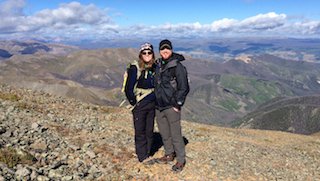Causes of COPD
Smoke from tobacco or marijuana is the primary cause of COPD, but not everyone who smokes will develop the disease. Other risk factors for COPD include:
- Long-term exposure to (non-smoke) airborne irritants such as certain gases, fumes, or dust
- Frequent use of a cooking fire without proper ventilation
- Indoor biomass fuel exposure
Research has shown that a gene, pleomorphic adenoma gene-like 2 (PLAGL2), might be a contributing factor to emphysema and lung cancer development.
A rare type of emphysema results from an inherited, genetic defect (mutation) that prevents the body from making enough alpha-1 antitrypsin (AAT). AAT is a protein that protects the elastic structures in the lungs.
Symptoms of COPD
Because COPD develops slowly, doesn’t always cause symptoms in its early stages, and shares symptoms with many other conditions, people may not realize they have the condition until it is fairly advanced.
The main symptoms of COPD are chronic bronchitis and shortness of breath that develops gradually. Other common symptoms include:
- Lingering cough, either productive (with mucus) or non-productive (without mucus)
- Wheezing or whistling sound when breathing
- Chest tightness
- Shortness of breath, especially during exercise
- Frequent respiratory infections
- Fatigue
- Swelling (edema) in legs, ankles, or feet
- Blue lips or nail beds (cyanosis)
- Unexplained weight loss
Diagnosing COPD
COPD is often misdiagnosed because its symptoms resemble those of other conditions. Our experienced lung specialists are skilled at evaluating symptoms to confirm COPD and rule out other conditions. We begin with a thorough evaluation that includes a:
- Physical exam
- Review of personal and family medical history
- Discussion of symptoms and any exposure to lung irritants
To confirm a diagnosis, we often recommend one or more additional tests, such as:
- Arterial blood gas measurement to check the levels of oxygen and carbon dioxide in the blood
- Blood tests to look for genetic causes
- Chest X-ray to produce images of the lungs to check for signs of disease and rule out other conditions
- Computed tomography (CT) scan to produce more detailed images of the chest to detect and diagnose emphysema using specialized X-ray technology that takes cross-sectional images
- Diffusion measurement to assess how well the lungs move oxygen into the bloodstream
- Lung volume measurement to determine how much air the lungs can process during inhaling and exhaling
- Spirometry assessment to measure the rate of air flow into and out of the lungs and estimate lung size
Treatment for COPD
UT Southwestern’s experienced lung specialists help COPD patients reduce their symptoms, live more comfortably, and slow or prevent the condition from progressing. Our team also advises patients on symptom-relieving lifestyle changes – such as quitting smoking, which is the best way to slow lung damage.
Medications
COPD treatment may include medications such as:
- Antibiotics to prevent and treat lung infections, such as acute bronchitis or pneumonia
- Bronchodilators (inhaled) to relieve cough, shortness of breath, and other problems by relaxing the muscles around the bronchial tubes
- Corticosteroids (inhaled) to reduce swelling in lung airways to improve shortness of breath
Nonsurgical Treatments
Nonsurgical COPD therapies may include oxygen therapy to increase blood oxygen levels and prevent high blood pressure in the lungs (pulmonary hypertension).
Pulmonary rehabilitation, which can improve lung function and overall health, is an essential nonsurgical therapy for COPD patients. UT Southwestern offers a long-term outpatient program with specialized therapists. Our services include:
- Instruction in breathing and coughing techniques
- Counseling and support
- Nutritional counseling
- Physical exercise recommendations
Surgery for COPD
People with severe lung damage caused by COPD may be candidates for surgeries that include:
- Lung volume reduction to remove small sections of damaged lung tissue, enabling remaining lung tissue to work better
- Lung transplant for people with advanced COPD for which other treatments have not worked
Over a recent 30-month period, our lung transplant program was rated the best in the nation for achieving the highest survival rate for one-year post-transplant patients. Since UT Southwestern’s lung transplant program began in 1990, it has consistently ranked among the top 10 in the United States.










